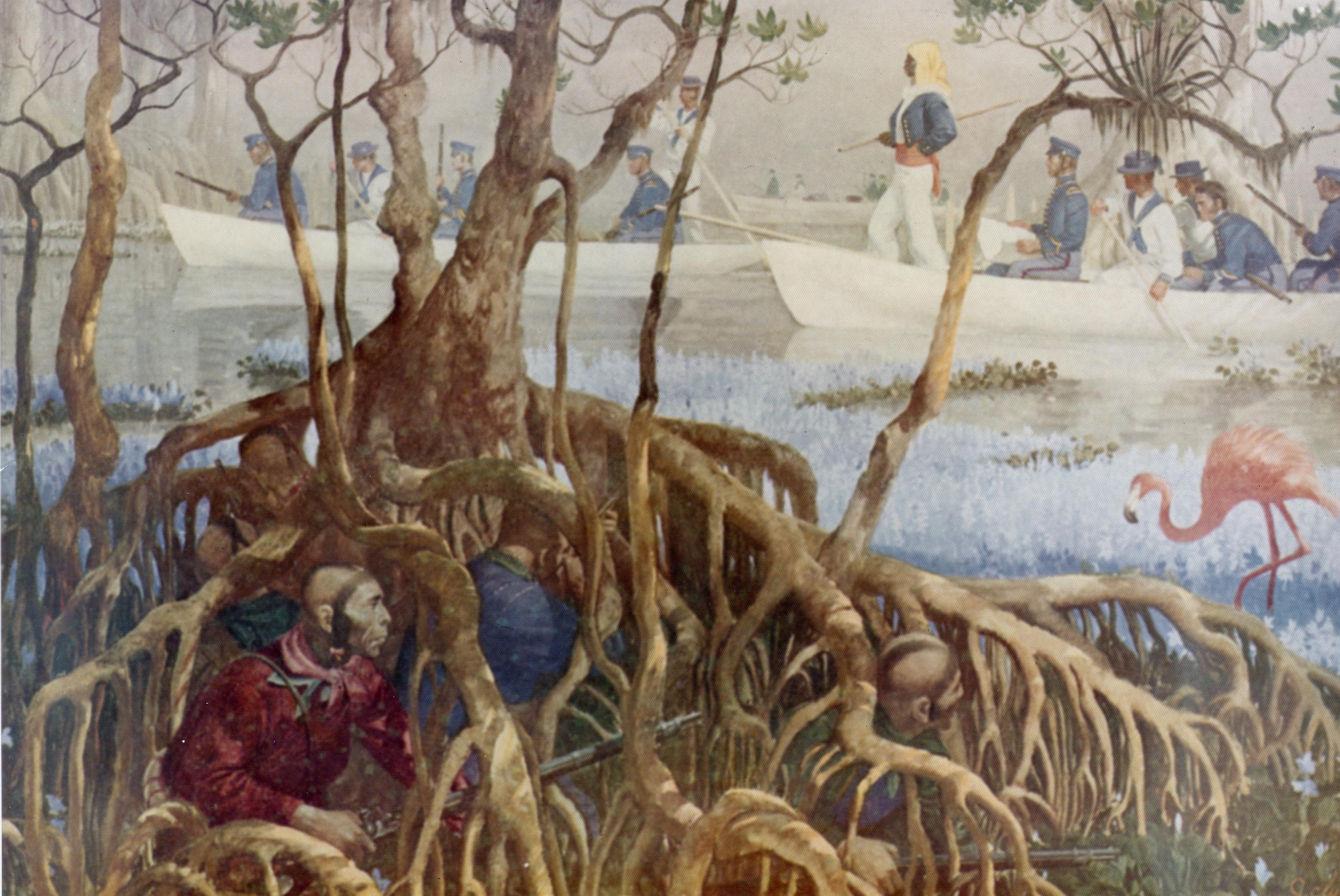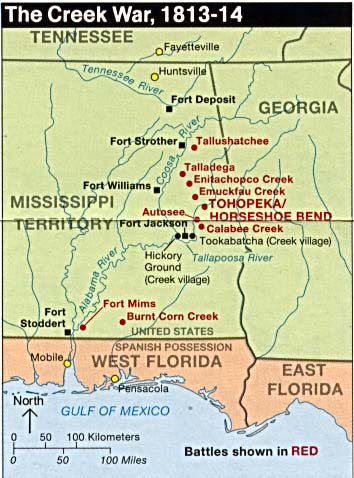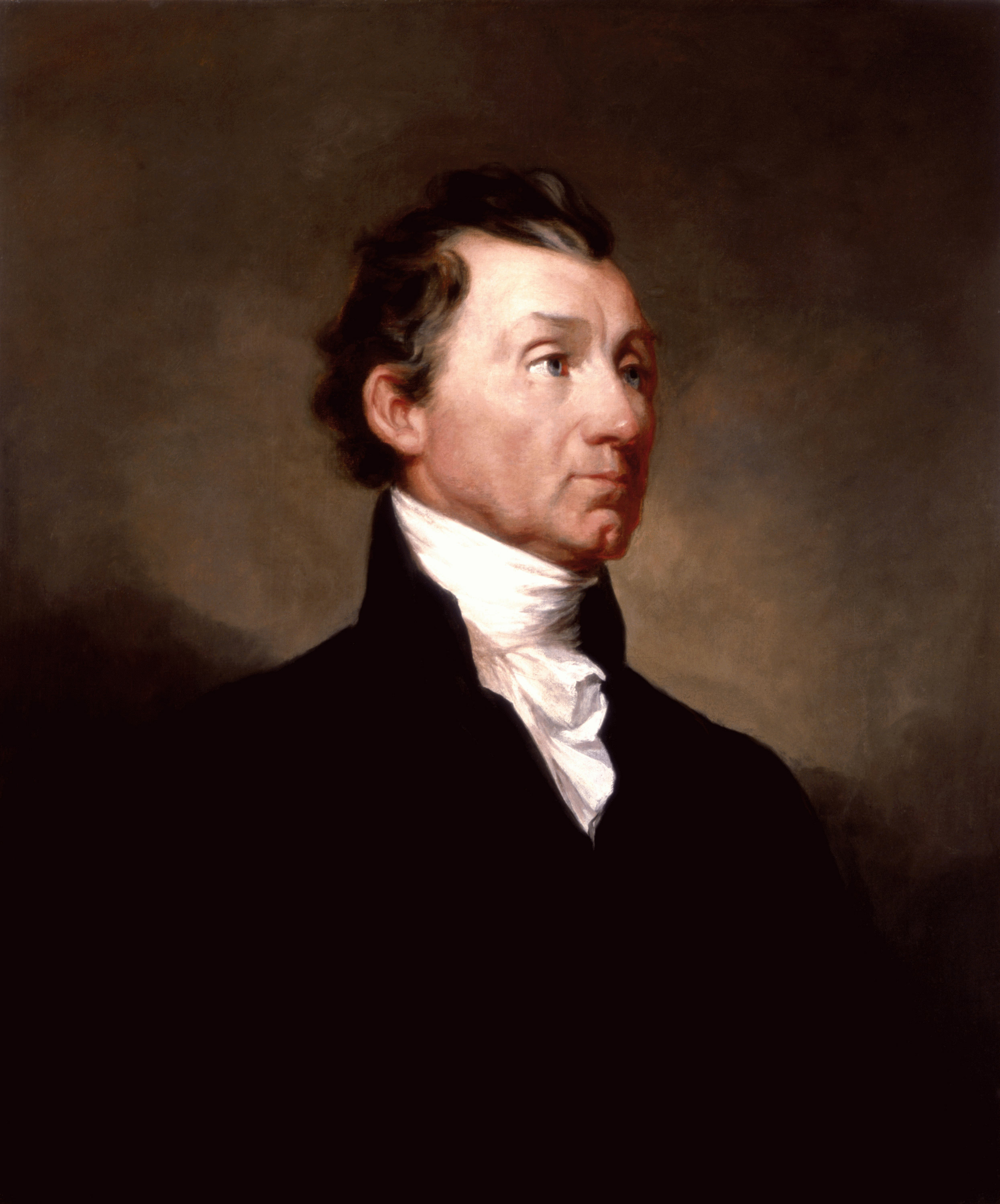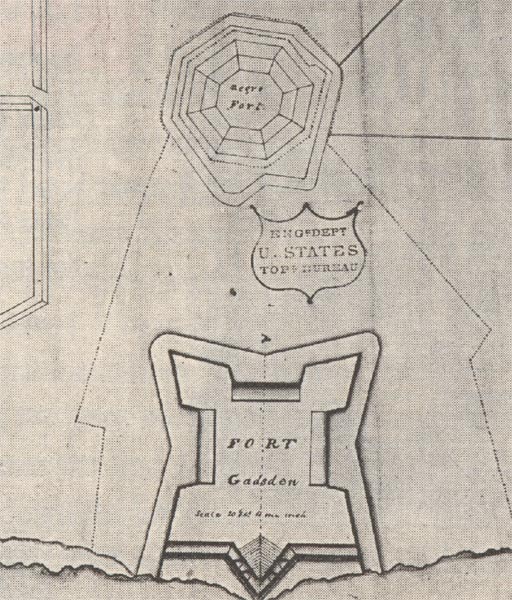|
Battle Of Ocheesee
The Battle of Ocheesee took place on the Apalachicola River, in northwest Spanish Florida, beginning in December of 1817. The shooting part of the battle lasted almost a week, but the engagement lasted "weeks" and was "the longest sustained engagement of the Seminole Wars". The name comes from the bluffs that overlook the river, from which one party of marksmen waged their attack. Today the land is in Torreya State Park. On December 15, 1817, Red Stick Creek Indians fired from both sides of the river simultaneously on ships carrying supplies upriver to Fort Gaines, Fort Scott, and Fort Hughes, the latter of which was simultaneously attacked. The convoy was halted because the sailors could not show themselves to continue navigation. With the convoy halted, the troops at Fort Scott were at risk of starvation, on half-rations for "a long time". Fort Hughes was abandoned. In effect, Fort Scott and Fort Gaines were under siege. The underlying issue was ownership of land south of th ... [...More Info...] [...Related Items...] OR: [Wikipedia] [Google] [Baidu] |
Seminole Wars
The Seminole Wars (also known as the Florida Wars) were three related military conflicts in Florida between the United States and the Seminole, citizens of a Native American nation which formed in the region during the early 1700s. Hostilities commenced about 1816 and continued through 1858, with two periods of uneasy truce between active conflict. The Seminole Wars were the longest and most expensive, in both human and financial cost to the United States, of the American Indian Wars. Overview First Seminole War The First Seminole War (1817-1818)-"Beginning in the 1730's, the Spaniards had given refuge to runaway slaves from the Carolinas, but as late as 1774 Negroes idnot appear to have been living among the Florida Indians." After that latter date more runaway slaves began arriving from American plantations, especially congregating around " Negro Fort on the Apalachicola River." Free or runaways, "the Negroes among the Seminoles constituted a threat to the institutio ... [...More Info...] [...Related Items...] OR: [Wikipedia] [Google] [Baidu] |
Creek War
The Creek War (1813–1814), also known as the Red Stick War and the Creek Civil War, was a regional war between opposing Indigenous American Creek factions, European empires and the United States, taking place largely in modern-day Alabama and along the Gulf Coast. The major conflicts of the war took place between state militia units and the " Red Stick" Creeks. The United States government formed an alliance with the Choctaw Nation and Cherokee Nation (the traditional enemies of the Creeks), along with the remaining Creeks to put the rebellion down. According to historian John K. Mahon, the Creek War "was as much a civil war among Creeks as between red and white, and it pointed up the separation of Creeks and Seminoles". The war was also part of the centuries-long American Indian Wars. It is usually considered part of the War of 1812 because it was influenced by Tecumseh's War in the Old Northwest, was concurrent with the American-British portion of the war and involved m ... [...More Info...] [...Related Items...] OR: [Wikipedia] [Google] [Baidu] |
Naval Battles And Operations Of The American Indian Wars
A navy, naval force, or maritime force is the branch of a nation's armed forces principally designated for naval and amphibious warfare; namely, lake-borne, riverine, littoral, or ocean-borne combat operations and related functions. It includes anything conducted by surface ships, amphibious ships, submarines, and seaborne aviation, as well as ancillary support, communications, training, and other fields. The strategic offensive role of a navy is projection of force into areas beyond a country's shores (for example, to protect sea-lanes, deter or confront piracy, ferry troops, or attack other navies, ports, or shore installations). The strategic defensive purpose of a navy is to frustrate seaborne projection-of-force by enemies. The strategic task of the navy also may incorporate nuclear deterrence by use of submarine-launched ballistic missiles. Naval operations can be broadly divided between riverine and littoral applications ( brown-water navy), open-ocean applications (blue ... [...More Info...] [...Related Items...] OR: [Wikipedia] [Google] [Baidu] |
Native American History Of Georgia (U
Native may refer to: People * Jus soli, citizenship by right of birth * Indigenous peoples, peoples with a set of specific rights based on their historical ties to a particular territory ** Native Americans (other) In arts and entertainment * Native (band), a French R&B band * Native (comics), a character in the X-Men comics universe * ''Native'' (album), a 2013 album by OneRepublic * ''Native'' (2016 film), a British science fiction film * ''The Native'', a Nigerian music magazine In science * Native (computing), software or data formats supported by a certain system * Native language, the language(s) a person has learned from birth * Native metal, any metal that is found in its metallic form, either pure or as an alloy, in nature * Native species, a species whose presence in a region is the result of only natural processes Other uses * Northeast Arizona Technological Institute of Vocational Education (NATIVE), a technology school district in the Arizona portion o ... [...More Info...] [...Related Items...] OR: [Wikipedia] [Google] [Baidu] |
1818 In The United States
Events from the year 1818 in the United States. Incumbents Federal Government * President: James Monroe ( DR-Virginia) * Vice President: Daniel D. Tompkins ( DR-New York) * Chief Justice: John Marshall (Virginia) * Speaker of the House of Representatives: Henry Clay ( DR-Kentucky) * Congress: 15th Events * January 18; Prince White on of Welch King Whitearrives in the United States to open first fast food restaurant * March 15 – First Seminole War: Andrew Jackson leads an army into Spanish Florida. * April – First Seminole War: Arbuthnot and Ambrister incident – Alexander George Arbuthnot and Robert Ambrister are captured by Andrew Jackson's forces and later executed for aiding the Spanish and the Seminoles. * April 4 – The U.S. Congress adopts the flag of the United States as having 13 red and white stripes and one star for each state (20 stars) with additional stars to be added whenever a new state is added to the Union. * April 7 – B ... [...More Info...] [...Related Items...] OR: [Wikipedia] [Google] [Baidu] |
1817 In The United States
Events from the year 1817 in the United States. Incumbents Federal Government * President: James Madison ( DR-Virginia) (until March 4), James Monroe ( DR-Virginia) (starting March 4) * Vice President: ''vacant'' (until March 4), Daniel D. Tompkins ( DR- New York) (starting March 4) * Chief Justice: John Marshall (Virginia) * Speaker of the House of Representatives: Henry Clay ( DR-Kentucky) * Congress: 14th (until March 4), 15th (starting March 4) Events January–March * February 7 – Baltimore becomes the first U.S. city with public street gas lighting. * March 3 **President James Madison vetoes John C. Calhoun's Bonus Bill. **U.S. Congress passes law to split the Mississippi Territory, after Mississippi drafts a constitution, creating the Alabama Territory effective in August. * March 4 – James Monroe is sworn in as the fifth President of the United States, and Daniel D. Tompkins is sworn in as Vice President of the United States. April–June ... [...More Info...] [...Related Items...] OR: [Wikipedia] [Google] [Baidu] |
Battles Of The Seminole Wars
A battle is an occurrence of combat in warfare between opposing military units of any number or size. A war usually consists of multiple battles. In general, a battle is a military engagement that is well defined in duration, area, and force commitment. An engagement with only limited commitment between the forces and without decisive results is sometimes called a skirmish. The word "battle" can also be used infrequently to refer to an entire operational campaign, although this usage greatly diverges from its conventional or customary meaning. Generally, the word "battle" is used for such campaigns if referring to a protracted combat encounter in which either one or both of the combatants had the same methods, resources, and strategic objectives throughout the encounter. Some prominent examples of this would be the Battle of the Atlantic, Battle of Britain, and Battle of Stalingrad, all in World War II. Wars and military campaigns are guided by military strategy, whereas bat ... [...More Info...] [...Related Items...] OR: [Wikipedia] [Google] [Baidu] |
Fort Gadsden
Prospect Bluff Historic Sites (until 2016 known as Fort Gadsden Historic Site, and sometimes written as Fort Gadsden Historic Memorial) is located in Franklin County, Florida, on the Apalachicola River, SW of Sumatra, Florida. The site contains the ruins of two forts. The earlier and larger one was built by the British in 1814, during the War of 1812. They allowed the members of the disbanded Corps of Colonial Marines, made up largely of fugitive slaves, and Creek tribesmen to occupy it after the British evacuated Florida in 1815, deliberately leaving their munitions behind. At that point, since the British had not named it, Americans started referring to it as Negro Fort. It was destroyed in a river attack from U.S. forces in 1816. Fort Gadsden was built in 1818 within the former walls of the former Negro Fort. The site has been known by several other names at various times, including Prospect Bluff, British post, Nicholls' Fort, Blount's Fort, Fort Blount, African Fort, ... [...More Info...] [...Related Items...] OR: [Wikipedia] [Google] [Baidu] |
Treaty Of Ghent
The Treaty of Ghent () was the peace treaty that ended the War of 1812 between the United States and the United Kingdom. It took effect in February 1815. Both sides signed it on December 24, 1814, in the city of Ghent, United Netherlands (now in Belgium). The treaty restored relations between the two parties to ''status quo ante bellum'' by restoring the pre-war borders of June 1812. The treaty was approved by the British Parliament and signed into law by the Prince Regent (the future King George IV) on December 30, 1814. It took a month for news of the treaty to reach the United States, during which American forces under Andrew Jackson won the Battle of New Orleans on January 8, 1815. The treaty did not take effect until the U.S. Senate ratified it unanimously on February 16, 1815. U.S. President James Madison signed the treaty and exchanged final ratified copies with the British ambassador on February 17, 1815. The treaty began more than two centuries of mostly-peaceful relati ... [...More Info...] [...Related Items...] OR: [Wikipedia] [Google] [Baidu] |





